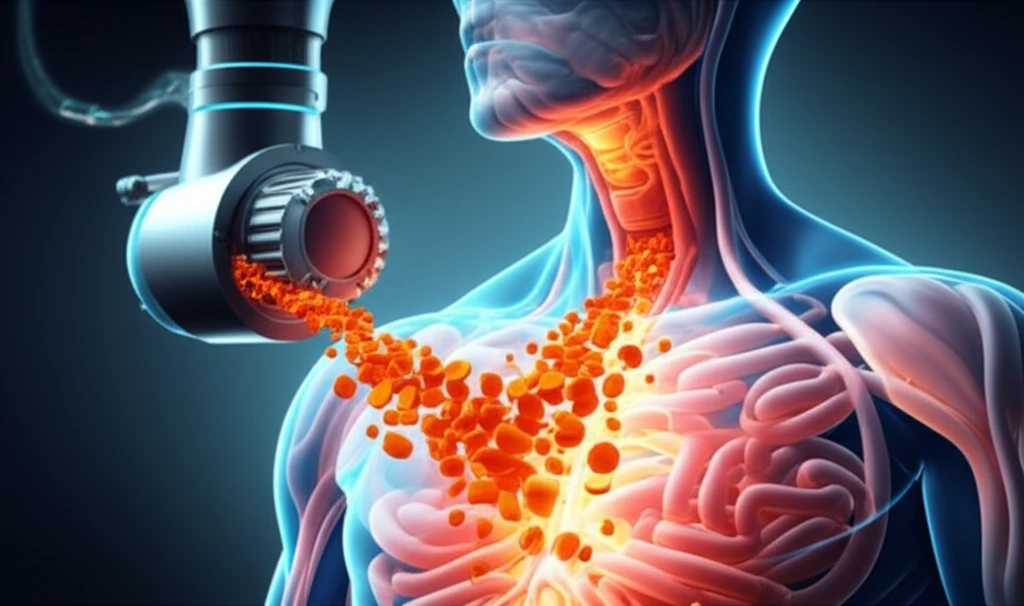
Extrusion Enhancements: How Food Processing Boosts Bioavailability of Key Nutrients
"Unlocking the potential of carrots: Discover how extrusion processing can make nutrients like beta-carotene and lutein more accessible to your body, enhancing the nutritional value of common snacks."
In today's fast-paced world, snack consumption is on the rise across all age groups. While convenient, many traditional snacks lack substantial nutritional value. This has sparked interest in fortifying these snacks with wholesome ingredients. Carrot pulp, rich in beneficial compounds, presents a promising option for enhancing the nutritional profile of commonly consumed snack foods.
However, simply adding nutritious ingredients isn't enough. The body's ability to absorb and utilize these nutrients, known as bioavailability, is crucial. This is especially true for carotenoids, the vibrant pigments found in carrots, as their health benefits depend on how well they can be absorbed during digestion. The food's structure and how it's processed play a significant role in this process.
A recent study investigated how extrusion, a common food processing technique, affects the bioavailability of key carotenoids like beta-carotene and lutein in carrot-enriched snacks. The research explores how extrusion impacts the nutrient content, antioxidant activity, and ultimately, the body's potential to absorb these valuable compounds. This article will walk you through the findings of this study, explaining how extrusion can unlock the hidden potential of carrots and transform ordinary snacks into functional foods.
Extrusion: Unlocking Bioaccessibility

Extrusion is a process where food is forced through a die, creating a specific shape. It's commonly used to produce cereal-based snacks. The study explored how different extrusion temperatures impact the bioavailability of carotenoids. Carrot pulp was added to corn-based snacks, and researchers analyzed the beta-carotene and lutein content, antioxidant activity, and phenolic content before and after extrusion. They also measured how easily these carotenoids could be absorbed during simulated digestion.
- Antioxidant Activity and Phenolic Content: Extrusion generally decreased antioxidant activity and total phenolic content. High temperatures and mechanical stress during extrusion can break down these delicate compounds.
- Beta-Carotene and Lutein Content: Similarly, extrusion reduced the overall amount of beta-carotene and lutein in the snacks. However, the effect varied depending on the specific temperature settings used during the process.
- In Vitro Bioaccessibility: Here's where things get interesting! Despite the decrease in overall carotenoid content, extrusion actually increased the in vitro bioaccessibility of beta-carotene and lutein. This means that even though there was less of these nutrients in the snack after extrusion, the body could absorb a higher percentage of what remained.
Snacking Smarter: Implications and Future Research
This research suggests that extrusion can be a valuable tool for enhancing the nutritional value of snacks. While it may reduce the overall amount of certain nutrients, it can significantly improve their bioavailability, ultimately increasing the body's ability to utilize them. This opens doors for creating functional foods that deliver more of the health benefits we seek.
However, it's important to remember that this study focused on in vitro bioaccessibility, which is a simulation of digestion in a lab setting. While promising, further research is needed to confirm these findings in human (in vivo) studies. These studies would provide a more complete understanding of how extrusion affects carotenoid absorption and utilization in the human body.
In conclusion, extrusion processing holds promise for improving the nutritional value of everyday snacks. By carefully controlling the extrusion process, manufacturers can potentially create snacks that are not only convenient and appealing but also deliver a greater dose of absorbable nutrients, contributing to a healthier diet.
